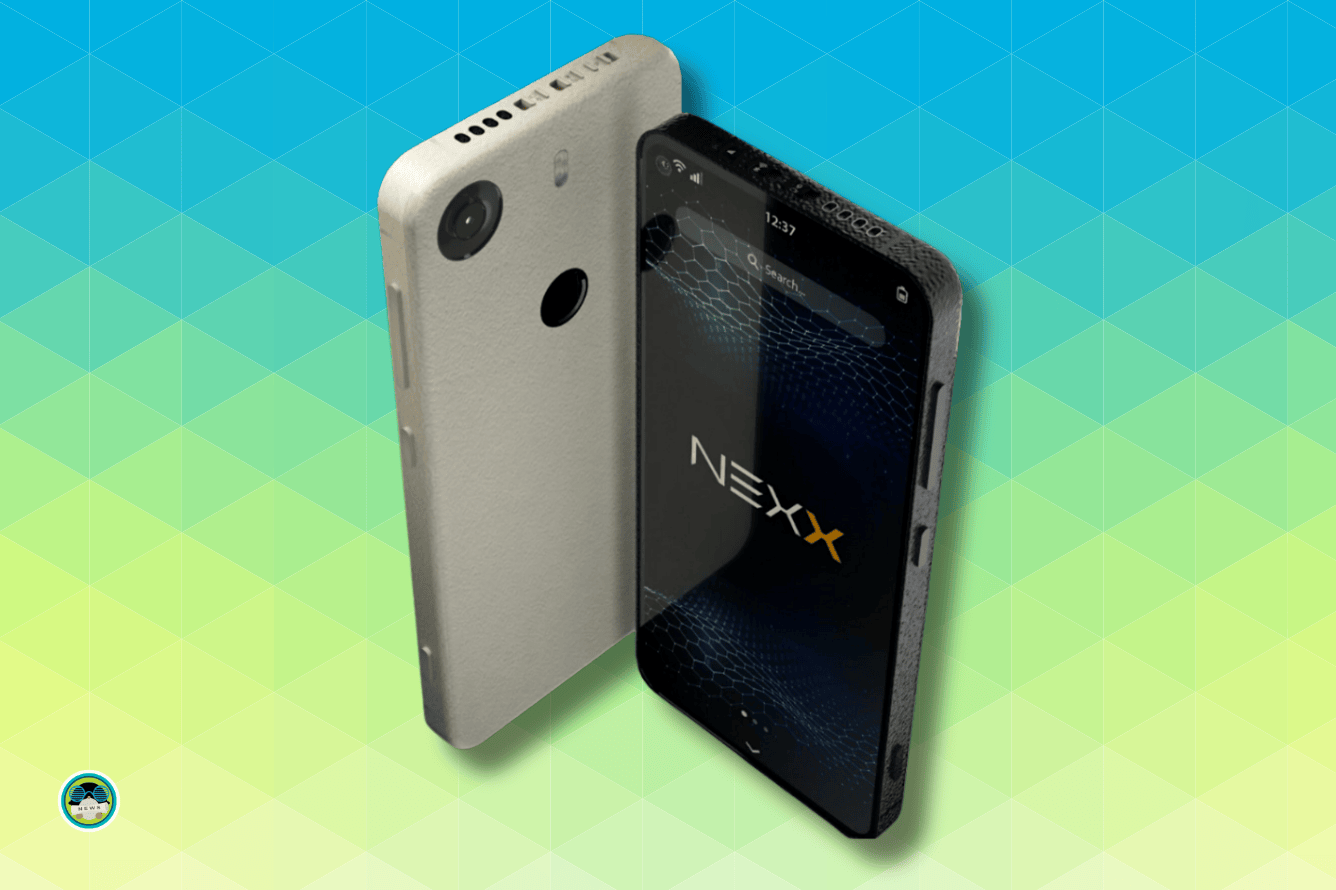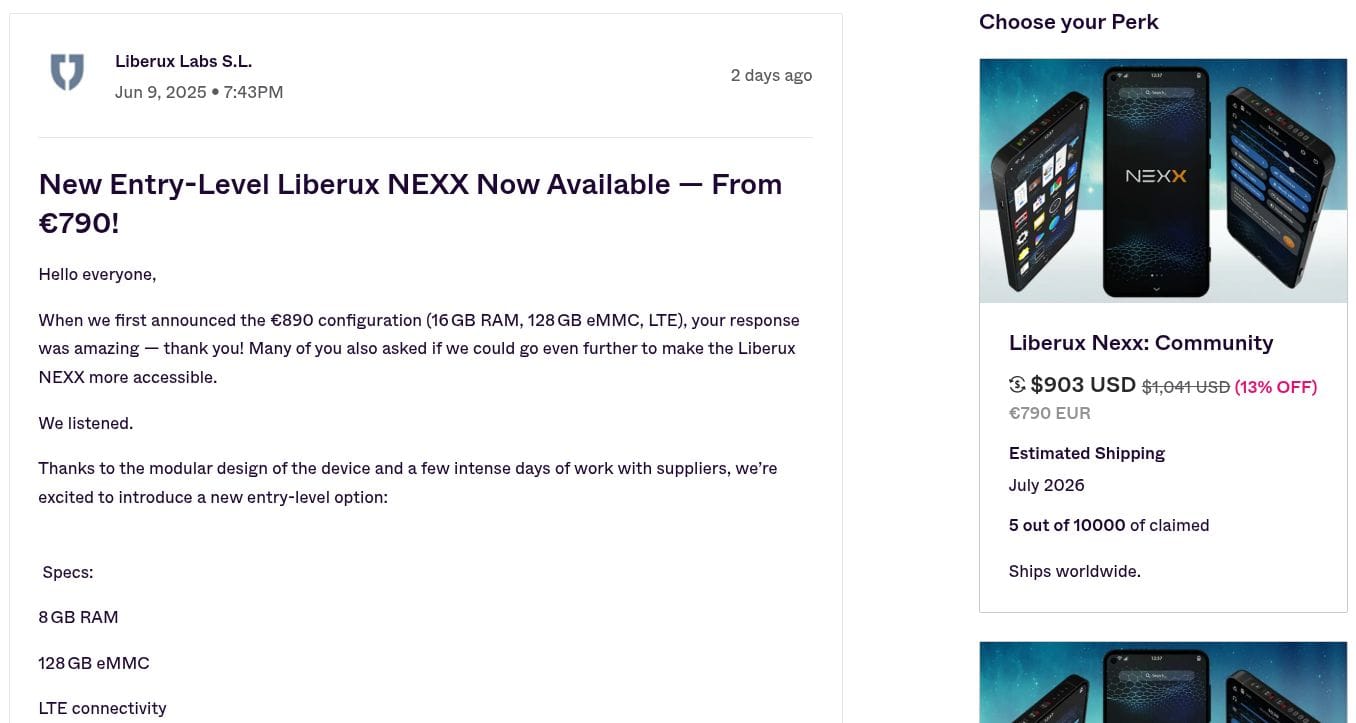Crossposted from https://rss.ponder.cat/post/204768

Based in Madrid, Liberux is gaining attention with its Linux smartphones that run on LiberuxOS — a mostly open source operating system built from scratch, completely independent of Android and iOS. Their NEXX line of smartphones distinguishes itself as a Linux phone capable of running standard Linux distributions right out of the box.
Realizing that most people aren’t looking to spend a fortune on niche tech, Liberux recently announced that it was working on a more affordable version to make the NEXX accessible to a broader audience.
As far as I’m concerned, it’s exciting to see organizations working to bring Linux phones into the mainstream.
Liberux NEXX: What Does it Offer?
Let’s start with the original model, which is impressive for what it is. It looks like a legit attempt at creating a daily-driver Linux phone that doesn’t feel like a development kit.
The Liberux NEXX features an octa-core Rockchip RK3588S processor (4×Cortex-A76 + 4×Cortex-A55, up to 2.4 GHz), 32 GB of LPDDR4x RAM, and a 6.34″ 2400×1080 OLED display.
It includes 512 GB of eMMC storage, which is expandable via microSD (up to 2 TB). Connectivity options include dual USB-C ports, 5G, Wi-Fi 5, Bluetooth 5.0, and a 3.5 mm headphone jack.
Those are solid specs, and the price (~$1,485) shows it. 😲
Enter, The Budget-Friendly Alternative

The Liberux NEXX Community edition serves as a more affordable alternative to the original model while retaining many of its core features.
It includes the same 6.34-inch OLED display, Rockchip RK3588S processor, 32MP rear and 13MP front cameras, dual USB-C ports, a 3.5 mm headphone jack, a 5,300 mAh battery, and microSD support up to 2 TB. Both versions run LiberuxOS, a Debian-based Linux operating system.
While the flagship model comes with 32 GB RAM, 512 GB storage, and 5G, the new Community version offers 8 GB RAM, 128 GB storage, and 4G LTE connectivity. There’s also a mid-range option with 16 GB RAM.
🛒 Getting the Liberux NEXX Community
As with any crowdfunding campaign, delays or changes are expected. Currently available on Indiegogo, the Community model with 8 GB of RAM is priced at approximately $900, excluding shipping costs.
Additional tiers such as First Backer and Golden Backer are also available, offering various perks. Shipments are expected to begin globally in July 2026, though availability may vary by country.
Via: Liliputing
From It’s FOSS News via this RSS feed


That’s the age of the design. If you look at first use (usually a year later), and then widespread use beyond flagship chips for big cores (2+ years later), you’ll end up with different dates. Not every core ARM puts out ends up being used in a ton of chips across SoC vendors, as some fare better in the trade-of between transistors and real world performance/energy efficiency than others. A76 is definitely popular, if you look at SoC out there. The RK3588(s) GPU was announced in 2021 and shipped in 2022 first - so it’s relatively new, as the SoC is also not that old: RK3588s was introduced in early 2022, and these days it has decent enough Linux support to start building a Linux-first product with it.
The issue for small companies like Liberux is that they
That narrows things down very much, and leaves a quite narrow chip selection. Another start-up with the same goal, dawndrums, are designing around the same chip for that very same reason.
If you are in doubt about how competent RK3588(s) is, look into the work that Lucie from MNT does - a lot of future product design is done on MNT hardware, these days powered by that very RK3588.
Fair about the years, let’s call them 2019 models instead.
I do doubt rk3588’s performance because my phone has a76 + a55 and it has nowhere near desktop performance like the person above claimed. And for people with more recent phones it would be a downgrade.
The soc being merely 3 years old despite having older components doesn’t mean much; you could make the same arguement about the phone being brand new regardless of what cpu it has but that doesn’t change the fact that it doesn’t perform like a 2025 device. This is like amd repackaging zen 2 and zen 3 processors as if they were new by declaring the most significant digit ‘year’ and 3rd most significant digit ‘generation’.
And I really doubt rockchip (or any other manufacturer) chose a76 because it was better than its successors in some way. As I see it rk3588 is using these cores because they’re the best available on the 8nm process node that rockchip could afford. Which I suppose isn’t unreasonable for a low cost chip in 2022, but this is a
20252026 smartphone that’s reducing costs by using a 2022 chip that itself reduced its costs by using 2019 tech.